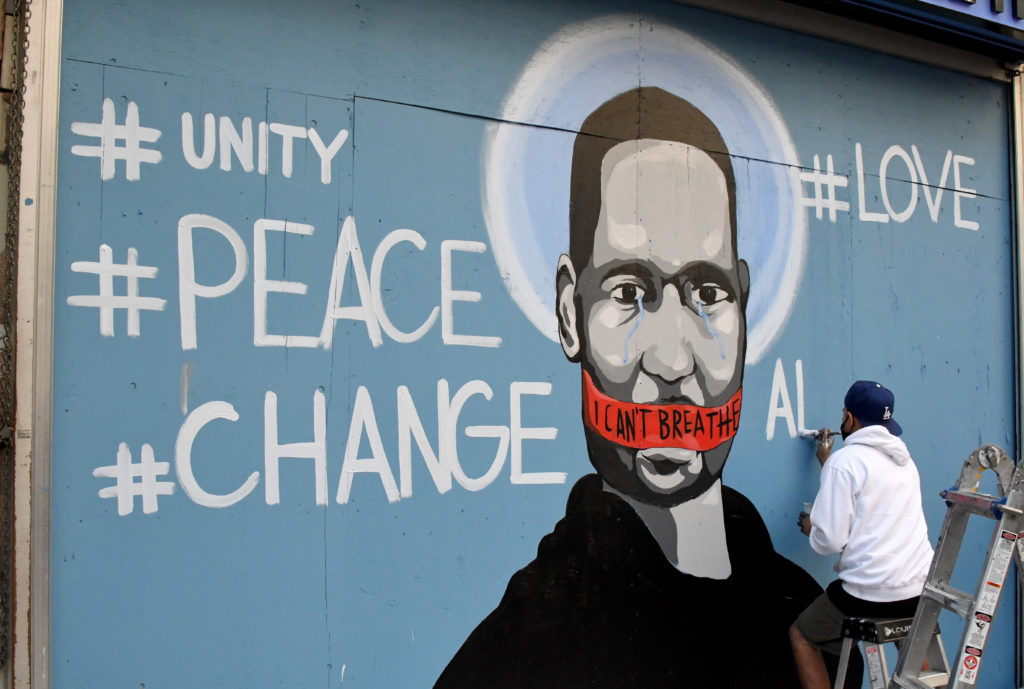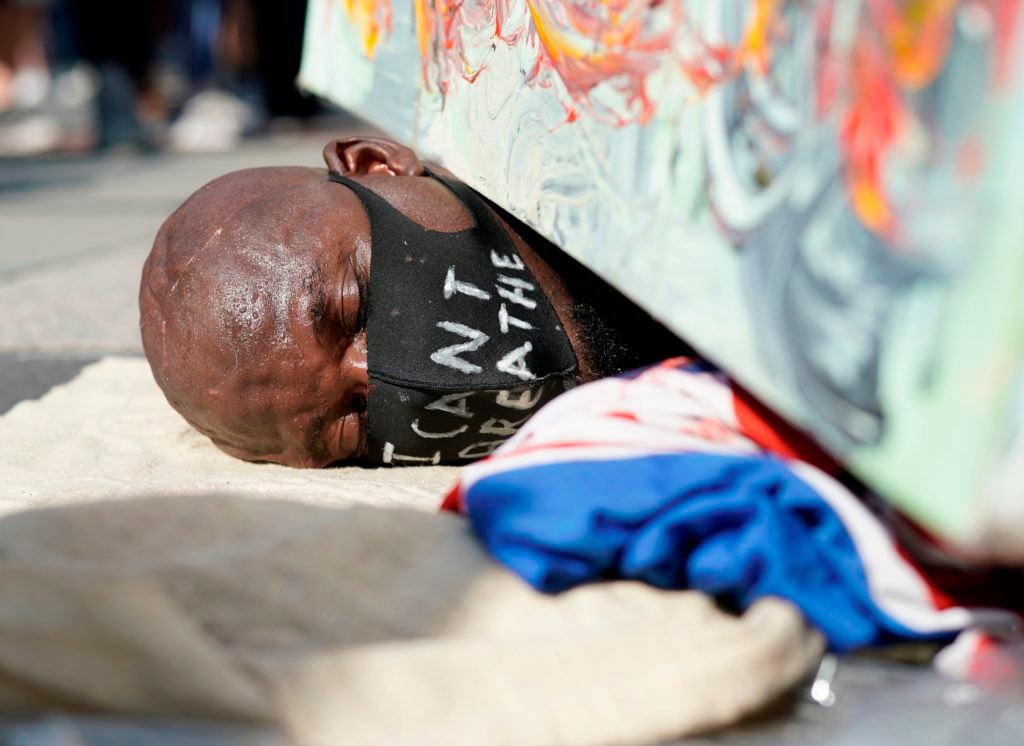Opinion
The Gray Market: Why the Art World Needs Actionable Plans, Not #BlackoutTuesday, to Fix Racial Injustice (and Other Insights)
Our columnist on why hashtags and form emails won’t solve centuries of racism in the American art world.

Our columnist on why hashtags and form emails won’t solve centuries of racism in the American art world.

Tim Schneider

Every Monday morning, Artnet News brings you The Gray Market. The column decodes important stories from the previous week—and offers unparalleled insight into the inner workings of the art industry in the process.
This week, asking whether “doing better” is really doing enough…
On Tuesday, dozens of Instagram accounts run by for-profit and nonprofit companies, both inside and outside the arts, posted a monochrome black square with the hashtag #BlackoutTuesday, ostensibly in solidarity with the Black Lives Matter movement and the push for lasting change on issues of racial justice. The question now is how many of those pledges will be matched by meaningful action.
Although the meme began in the arts, it wasn’t in the visual arts. Jamila Thomas and Brianna Agyemang, who describe themselves as simply “two Black women in music” (both are marketing executives), originally proposed the black square with the hashtag #TheShowMustBePaused. They wrote that its purpose was to encourage people to “take a beat for an honest, reflective, and productive conversation about what actions we need to collectively take to support the Black community.”
By Tuesday, it had spread far beyond its music-industry focus with the #BlackoutTuesday verbiage, reaching everywhere from art museums, galleries, and art-media properties (including Artnet) to tech companies, fashion brands, and carmakers.
Despite its good intentions, though, the campaign had both fans and detractors. Anny Shaw and Gareth Harris at The Art Newspaper rounded up reactions from both camps in the art industry, and Joe Coscarelli at the New York Times found essentially the same spectrum of complaints in the music world.
Critics argued that some participants were accidentally crowding out actual resources and news related to Black Lives Matter by hashtagging the movement’s name alongside (or in place of) #BlackoutTuesday or #TheShowMustBePaused. Others seemed content to use the black square and the “day of reflection” concept as an opportunity to mimic Michael Jordan’s “Republicans buy sneakers, too” playbook and avoid anything but the blandest possible language about peace and equality. (Some, like the Getty, later apologized.) Still others felt that, even when the black square was accompanied by an unequivocal statement of support for the Black community, the space would have been better used to signal boost works by Black artists, information directly assisting protesters, or encouragements to donate to nonprofits involved in the struggle.
In one way or another, all of the above circles the fundamental question about the art world’s #BlackoutTuesday: Memes and statements are nice, but who’s actually doing anything to address the problem?

Walker Art Center in Minneapolis, Minnesota. Photo: Wikimedia Commons.
At least a few entities in the art world deserve recognition for taking small but positive steps this past week. The Walker Art Center made the biggest splash by ending a deal with the Minneapolis Police Department in which off-duty cops doubled as museum security guards. Gladstone Gallery and Galerie Lelong raised a combined $52,000 for nonprofits combating racial injustice by matching donations up to a certain dollar figure. The Brooklyn Museum became the first major New York art institution to aid protesters by allowing them to use their restrooms from 2 p.m. to 6 p.m. daily.
Still, with so many arts organizations now making contrite public statements pledging to do better, it’s time to ask what “do better” actually means, analyze whether the specifics will make a difference, and follow up to see who actually follows through.
This tweet from the New Museum Union, in response to a statement the museum emailed over the weekend, is a great example of both the problem of hazy commitments (see: implicit-bias training, internal working groups, “further diversifying” the staff and board), and the watchdogging we—especially we in the media—need to do going forward. (In a later tweet, the moderators of the union’s account claim that, in the “several” years they’ve worked at the institution, they “haven’t heard shit about” the implicit-bias training that will supposedly continue there.)
In their BLM statement today, the @newmuseum admits they know they are not doing enough and commits to absolutely nothing pic.twitter.com/vYwUzJXUWW
— New Museum Union (@newmuseum_union) June 6, 2020
There’s been a lot of this going on. Two weeks after George Floyd’s murder by Minneapolis police, my inbox and social-media feeds suggest that announcing vague diversity initiatives in solidarity with Black Lives Matter is the new launching an online viewing room: almost no one seemed to think it was important enough to address in any concrete way for the past several years, and now all of a sudden the entire industry wants us to believe it’s one of their core operating principles. Crises are a hell of a thing.
In fairness, it’s not just arts organizations that are bombarding us with messages of dubious sincerity on this front. Seemingly every corporation in America is riding the wave. For instance, thank you, Gushers Fruit Snacks, for confirming that racial justice is indeed central to your mission to produce small grenades of high-fructose corn syrup for children everywhere, and that you will be “working with Fruit by the Foot on creating space to amplify that.”

A protestor lays on the ground mimicking the final moments of George Flyod on May 29, 2020, at Foley Square in New York during a “Black Lives Matter” protest. (Photo by TIMOTHY A. CLARY/AFP via Getty Images)
Back to the arts. Ironically, if you want to know why these pledges for change demand specifics and oversight, look at what’s resulted from similar alleged moments of reckoning in American policing itself. US law enforcement has paved a long road of promises for transformative action that has actually led to no transformation at all.
In a recent episode of NPR’s Throughline podcast, Harvard historian Khalil Gibran Muhammad traced the racist history of police forces in America all the way back to their inception. Near the episode’s conclusion, Muhammad recounts acclaimed sociologist Kenneth Clark’s testimony before then-President Lyndon Johnson’s Kerner Commission, which sought to identify the root causes of the civil-rights uprisings that rocked America during the mid-1960s:
[Clark] said, I read the report of the 1919 riot in Chicago, and it is as if I were reading the report of the investigating committee of the Harlem riot of 1935, the report of the investigating committee of the Harlem riot of 1943, the report of the McCone Commission of the Watts riot of 1965. I must again in candor say to you members of the commission, it is a kind of “Alice In Wonderland” with the same moving picture re-shown over and over again, the same analysis, the same recommendations, and the same inaction.
Muhammad goes on to link this shameful repetition to the review boards and investigative commissions formed in response to the police killings of Black teenagers Michael Brown in Ferguson in 2015 and Laquan McDonald in Chicago in 2017, saying:
[I]t seems to me that what’s possible is recognizing that police officers and police agencies are incapable of fixing themselves. They’ve never been able to do it, and they’ve never particularly been compelled to do it. The incentives have never quite added up to be strong enough.
We’ve seen a similar movie play out in the arts, as well, particularly on the nonprofit side. Time to see if this industry, unlike the police, is finally ready and able to hold itself accountable—or whether it too can only achieve justice by being dismantled.
That’s all for this week. ‘Til next time, remember: If you’re not part of an actionable solution, you’re part of the problem.